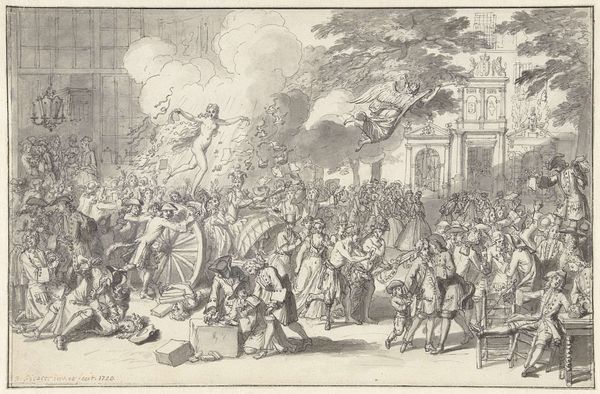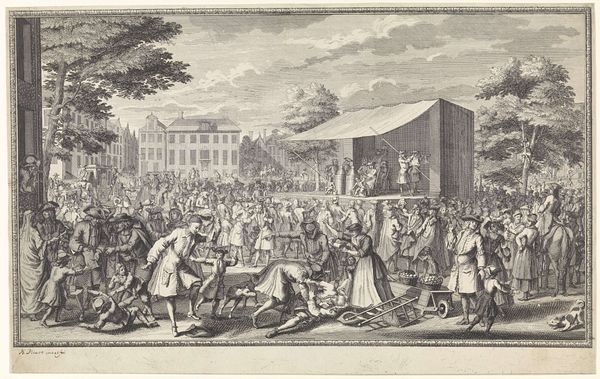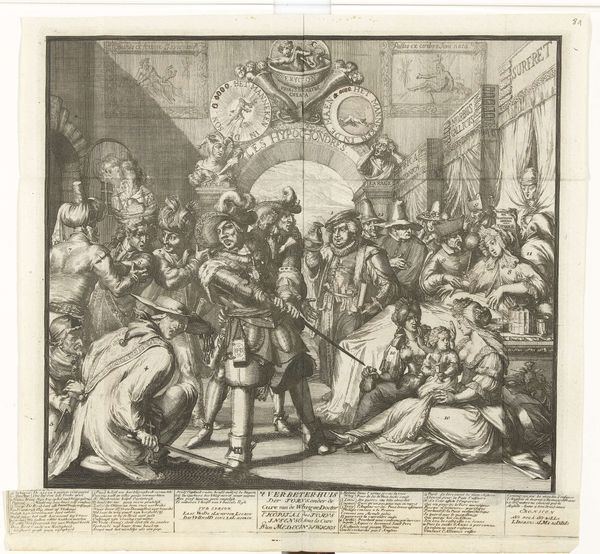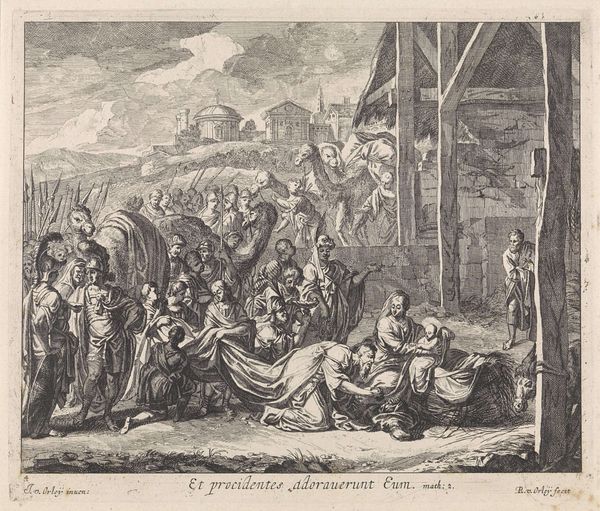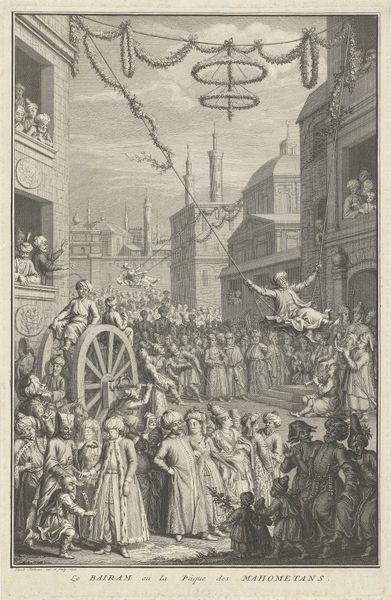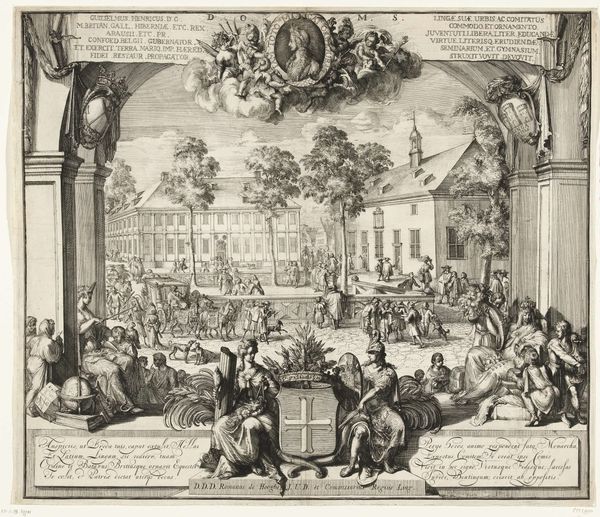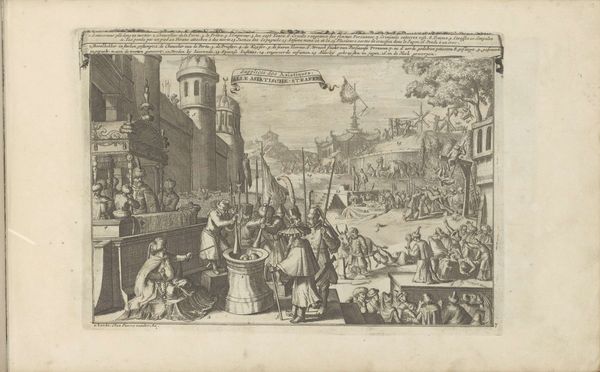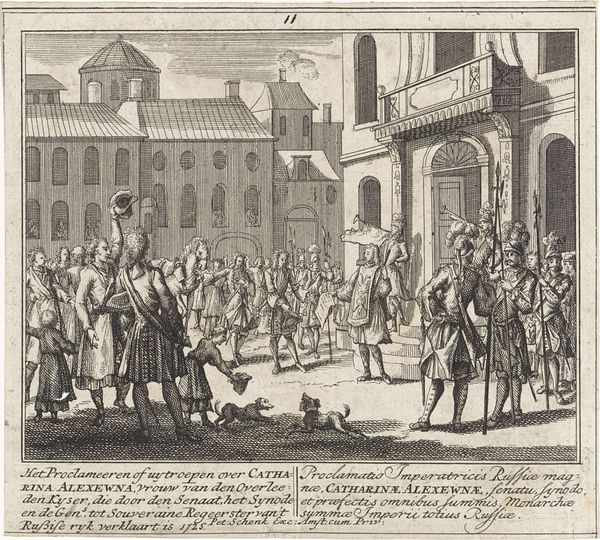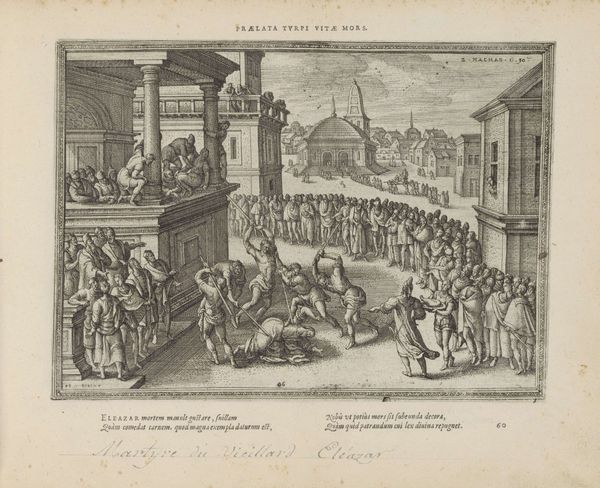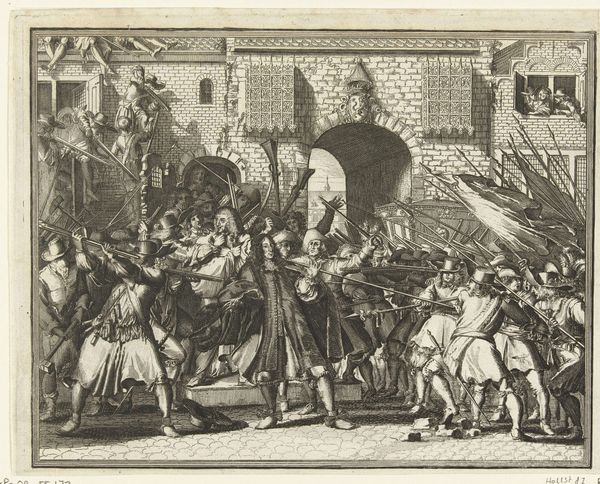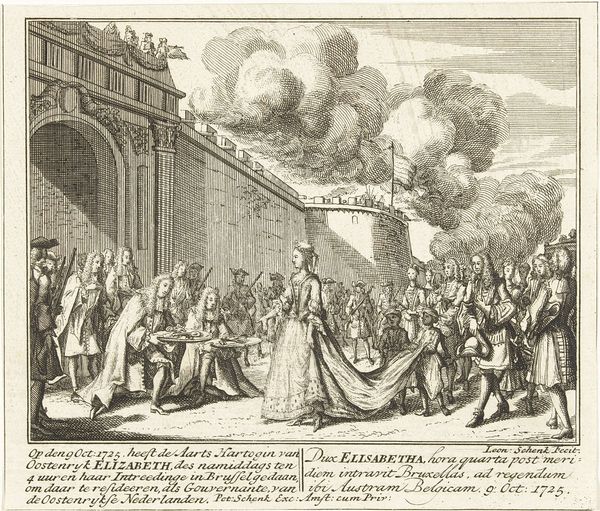
print, etching, engraving
#
allegory
#
baroque
# print
#
etching
#
caricature
#
history-painting
#
engraving
Dimensions: height 280 mm, width 372 mm
Copyright: Rijks Museum: Open Domain
Bernard Picart created this print, "Monument ter herinnering aan de dwaasheid van het jaar 1720," sometime around that year, using etching or engraving – processes that rely on the controlled erosion of a metal plate to create an image. The print depicts the frenzy surrounding the Mississippi Company, an early example of speculative bubble. What’s fascinating about prints like this is that they are products of a similarly speculative economy. Picart, like many artists of his era, was trying to make a living through his craft in a competitive market. The sharpness of the lines, the density of detail, these were all effects that Picart had to achieve through painstaking physical labor, using specialized tools to cut into the metal. The resulting image could be reproduced many times, and sold relatively cheaply, allowing the circulation of social commentary to a broad public. So, in a way, the print itself is a commodity, not unlike the financial instruments it satirizes. Looking closely at how it was made helps us understand its place in that world.
Comments
No comments
Be the first to comment and join the conversation on the ultimate creative platform.
